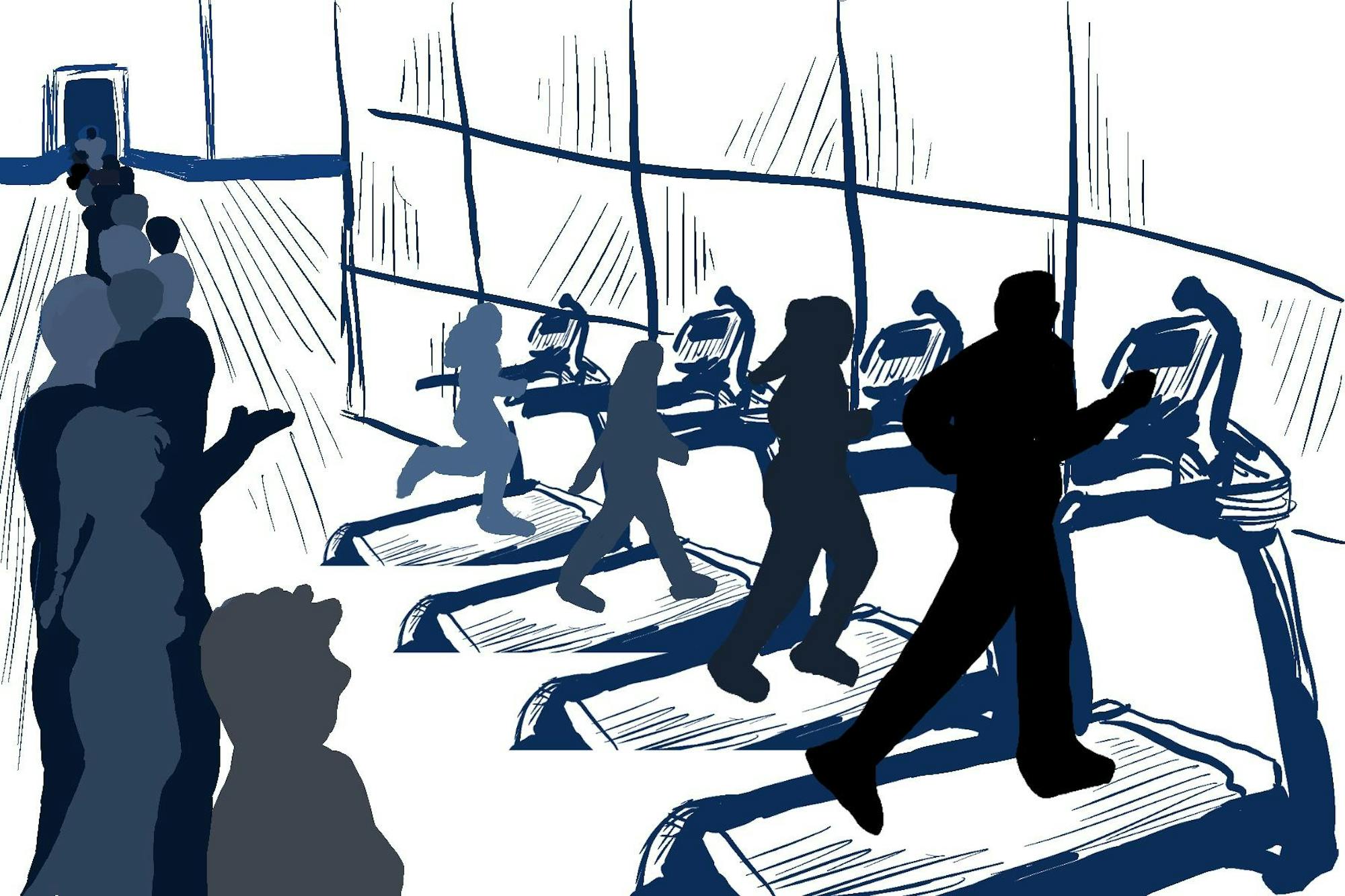It doesn’t take an Econ major to notice the disparity between supply and demand for physical activity at Tufts. Two issues are especially prominent: The Tufts gym is too crowded, and it is too difficult to register for a physical education course. Given the registration difficulties that seem to persist semester after semester, along with students previously noting issues regarding the Steve Tisch Sports and Fitness Center, the quandary of searching for fulfilling exercise ought to be addressed by the university. In hopes of ameliorating these concerns, the editorial board would like to provide several potential solutions at the administrative level to be taken into consideration.
Perhaps most pressingly, Tufts needs to address the overcrowding of the gym. During the winter months, it can be difficult to find outdoor exercise activities, which only heightens students’ compulsion to seek indoor physical fitness as a reprieve from their stressful studies. Despite the much-acknowledged benefits of regular physical activity, Tufts is in danger of turning its students away from a healthy lifestyle with a congested gym. First, Tufts should expand gym hours. Currently, the Tisch Fitness Center is open every weekday from 7 a.m. until 10:30 p.m. However, other universities in Boston such as Harvard, MIT and Boston University all have gym hours that regularly last from 6 a.m. until 11 p.m., with Northeastern and Boston College’s gyms typically remaining open even longer. Increasing gym hours would put Tufts on par with other Boston universities and work to reduce congestion by spacing out students’ workout times over a longer period.
In addition to expanding regular gym hours, Tufts should also consider offering alternate gym spaces. Of course, Tufts should ultimately look to begin building a new gym that is able to meet student demand. In the short term though, Tufts can add gym spaces to existing or forthcoming spaces that supplement the main center. For example, Tufts could add a few machines, weights and stretching areas to underutilized dorm spaces that could be accessed all hours of the day with an ID card. Additionally, Tufts should look to build these gym spaces into ongoing dorm projects, such as the planned new residence hall on Boston Avenue and the Blakeley Hall renovations.
Tufts is fundraising for a new aquatics center. The new facility, once funded and constructed, would provide Tufts with an opportunity to add more space for personal exercise, club use and physical education class space, alleviating the current strain on the Tufts gym. The site of the Hamilton pool could then be utilized for a variety of purposes, but the university could especially consider expanding the weight room or adding a rock climbing gym. Currently, the large Tufts Climbing Team has to go off campus to practice, and members have to pay a steep cost of $95 per month for a climbing gym membership. A new rock climbing gym in the place of the Hamilton pool would provide students with a valuable and fun exercise opportunity and could allow the university to open up rock climbing PE courses.
Not only should Tufts look to add new gym spaces, but they should also look to improve existing areas that could be better utilized for physical education. For example, Tufts should look to repair the drafty Jackson gym, where several club and varsity teams hold practices, and convert the old squash courts in the fitness center. Tufts has already transformed some of this space into a golf simulator for the golf team, and our recommendation is that they simply add another simulator that students may reserve. The university could also use another golf simulator for PE classes, which presently fill up extremely quickly.
The final piece to addressing increased physical fitness availability on campus should be to expand the offerings of PE classes by adding more instructors. To say that PE classes at Tufts fill up quickly is an understatement — the vast majority are completely filled by the time first-year students and sophomores register for classes. The university can open up more space for these classes by following our prior recommendations and can attain the goal of a better physical education program at Tufts simply by hiring more instructors to teach the courses. Moreover, Tufts could consider allowing students to earn credit by teaching PE courses; students already teach drop-in fitness classes for the Tufts University Social Collective. The university has already tested the peer teaching model with the Experimental College. It should be even easier to apply this model to PE classes since the grading is based mostly only on attendance and participation. In addition, typical PE instructors are not expected to have advanced degrees in order to be qualified to teach.
Tufts should recognize that its student body knows the many benefits physical fitness provides college students and seek to help foster the growing spirit of exercise on campus. Although some students might currently be dismayed at the crowded gym and disappointing lack of PE class availability, they should be assured that the problem is only temporary, as there are a plethora of solutions. Just like a beginning weightlifter, the Tufts administration may feel that they are wasting their time and could be pursuing academics instead; we hope that Tufts will soon find that investing in the gym is sure to work out.





